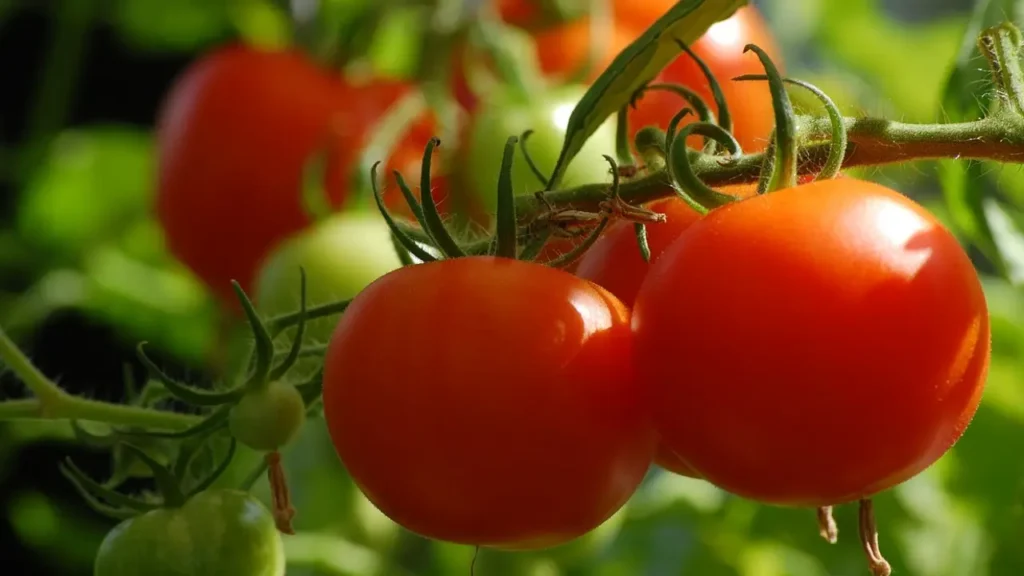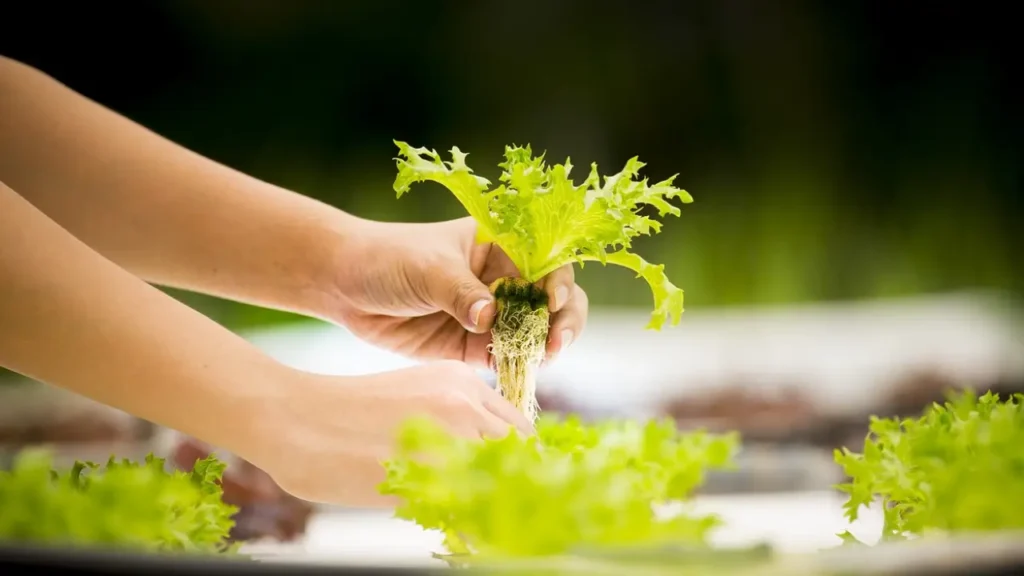Can you picture yourself going out in your backyard and behold your planted cornfield? With the rays of the sun, the stalks bend; each ear holds the taste of summer. Sustaining corn is not merely business; it brings back an affection, some healthy laughter and the companionable relief of good meals. Interesting for the experienced and the first-time gardener at the same time. Here is a guide that will teach you how to grow corn, starting from the selection of your variety up to the time of harvesting your crop and also on how to protect it. Well, I will begin this path with the facts needed for a corn field to produce a remarkable yield.
Key Takeaways
- Corn needs full sun and rich, well-drained soil to grow well.
- Water corn plants once or twice a week for health.
- Plant different types of corn and spread out the planting for a long harvest.
- Use organic fertilizers and soil helpers to feed the corn.
- Watch out for pests and diseases that could harm your corn.
- Harvest corn when the silks are dry and brown for the sweetest taste.
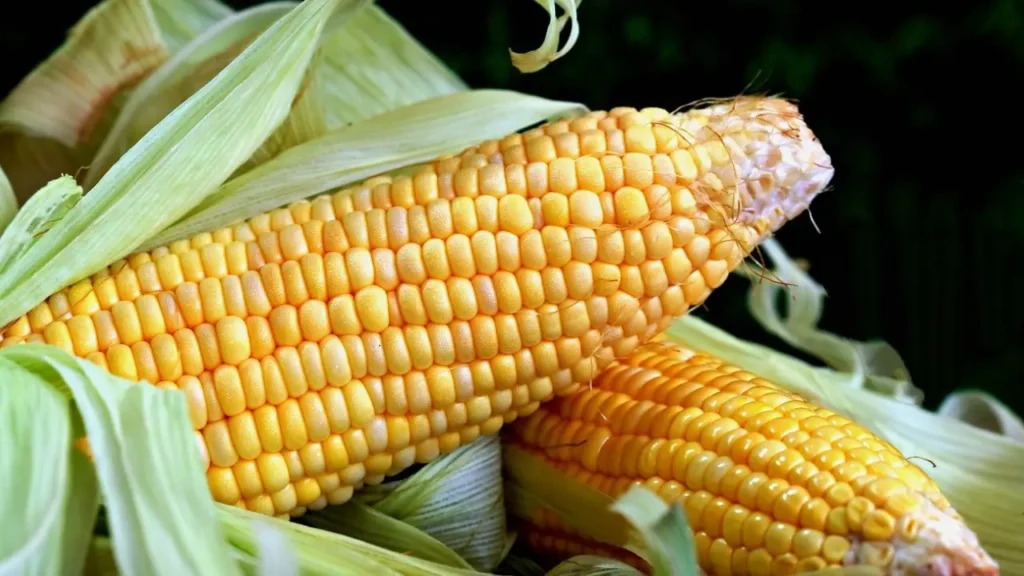
Table of Contents
Introduction to Corn Cultivation
Corn is one of the staple crops in the United States of America and is embraced since it has a myriad of uses and produces the most yields. For growing corn well, there are certain stages or processes that one has to go through. Whether you are just having a small garden in your house compound or a big field, planning is crucial in making a good improvement and the outcome will be a good harvest.
Selecting a nice area where corn is to be planted should be given due consideration. Plants do best in well drained soils that has a ph ranging from 6. 0 and 7. 0. It also modifies the pH level to give nutrients as equal as possible for the plant to grow well. Incorporating the organic matter in the soil also increases fertility because the corn requires strong soil to grow.
Selecting the correct type of corn is also a critical factor that must be put into consideration. They are also of various sorts some are to be eaten today as corn while others are the field corn to be used for grain. It is useful to know what each type needs, in order to make your growing efforts more efficient.
Planting pattern is also important when it comes to spacing your corn plants. The spacing of rows should be 30-36 inches while plants should be spaced 10 inches, each from the other in the row. It does this so that no plant has to compete with the neighbor and that they all receive appropriate amount of sunlight and water.
If, properly planned, corn farming will produce fresh corn and at the same time educate the grower on farming. It is advantageous in equally a little garden or a large open area. Take the word and start growing corn to see the many benefits that come with growing the crop.
Understanding Corn Growth Stages
To be able to get good things from cobs it us important to know how they grow. It is vital to note that corn passes through various stages of growth which influence care, productivity or yield and health. The development stages to be analyzed are the seedling stage, the tasseling stage and the pollination stage.
Seedling Stage
At the seedling stage, the coleoptile emerges out of the soil followed by the first leaf shoot. It is developed in versions such as V1, V2, V3, and so on that change with the growth of the application. At each stage, a new collar is added, which forms about 20 leaves.
In the right conditions of growth and development, a new leaf arises every 3 to 4 days. This quick growth is beneficial for photosynthesis, which isponsible for the growth of plants.
Tasseling Stage
The VT or tasseling stage in the growth of corn is when corn moves from the growth of leaves to producing flowers. That is the time when tassels shed pollen. This last one is perhaps the most important point for getting the timing right of the next growth stage.
When the plant has reached R1 the silks emerge and tassel starts pollinating. This implies altering the process through which the plants are attended with emphasis on pollination.
Pollination and Ear Formation
Fertility and formation of ear are found to be very important in corn growth. Silks emerge in R1 starting the process of pollination. Forth isoform, in R2, kernels start forming while the outer surface of the corn turns yellow.
It is important to note that good management is paramount at this stage. Bab as simple as water, the food the plants feed on, insects that may harm the flowers they treasure so much are important. Enumerated above are some of the factors that assist growers in tending for the corn plants properly.
| Growth Stage | Stage Code | Key Characteristics |
|---|---|---|
| Vegetative Emergence | VE | Coleoptile breaks through soil |
| First Leaf Collar | V1 | One visible leaf collar |
| Tasseling | VT | Tassels develop; reproductive phase begins |
| Silking | R1 | Silks emerge; pollen release |
| Blister Stage | R2 | Kernels form, white with clear fluid |
| Physiological Maturity | R6 | Black layer formed at kernel base |
Choosing the Right Variety of Corn
It is an important decade in determining the choice of the right corn variety. There are sweet corns and field corns; cooking corns for cooking such as popping corns and canned corns. Thus, it is possible to adopt better course and Decision making when the gardener understands the nutritional value of sweet corn and the difference from field corn.
Advantages of Sweet Corn
Sweet corn is consumed for its good taste. Due to new varieties it has become not only sweeter and crisper but also more beneficial to consume. These enhancements ensure that it lasts longer, just picked, and is can be mostly eaten fresh.
Sweet corn requires well-drained soils with slightly acidic to moderately acidic PH level of between 5. 8 and 7. 0. Incorporation of soil test to determine the amount and types of nutrients required in the field increases yield and is a correct way of cultivating corn.
Field Corn vs. Sweet Corn
Field corn is used mainly to feed animals while on the other hand sweet corn is used by humans. It can be seen that sweet corn has 5% to 44% of sugar differing significantly in value from other types of corns. The bad pollination is avoided when sweet corn is grown at least 300 feet away from the field corn.
In this way, looking at the regional circumstances and the following good time for planting, seed producers guarantee that they refine the sort of sweet corn that requires feeding at a particular time.
| Variety Type | Sugar Content (%) | Storage Life (Days) | Recommended Uses |
|---|---|---|---|
| Standard Sweet Corn (Su) | 5-16% | 1-2 | Fresh eating |
| Sugar Enhanced (Se) | 14-35% | 2-4 | Fresh eating, canning |
| Super Sweet (Sh2) | 28-44% | 9-10 | Fresh eating, freezing |
| Synthetic (Syn) | Varies | Varies | Fresh eating; combines tenderness and shelf life |
How to Grow Corn: Essential Planting Techniques
Taking superior care of your corn entails mastering how you should have planted your corn. Timing, the type of soil, and the space that you give to your corn can go a long way in improving the yields and resulting corn quality. These are essential issues that service provider must contemplate whenever they intend to plant corn seeds.
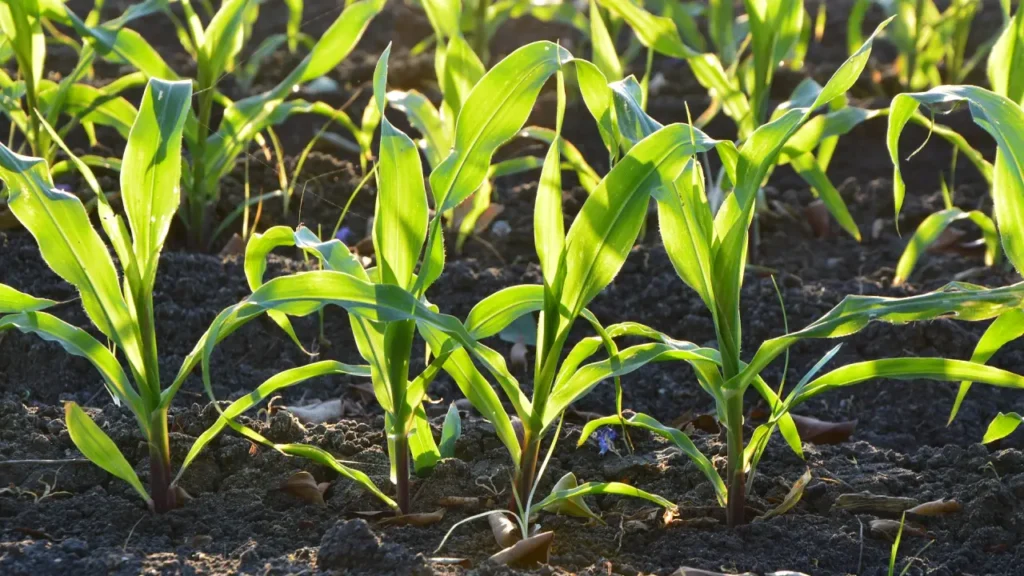
Determining the Best Time for Planting
Plant corn after the last risk of frost once the soil has reached at least 60°F. The period of vegetation without frosts is rather short and ranges between 60 and 100 days. Well, these are the dates that should not be unfamiliar to people in the affected regions. [For sweet corn,] the timing is very important as sweet corn, requires a good condition to do well.
Optimal Soil Conditions for Corn
Corn grows most efficiently in well–fertilized soil but, at the same time, well-draining soil. The main way is that test your soil to ensure that the pH level is between 6. 0 and 6. 8. When preparing the soil to plant corn, it is recommended that one should apply compost which enhances the nutrient values of soil to improve the growth of corn. Corn requires 2 inches of water per week during the appropriate weather; however, it is crucial to adjust the amount depending on the particular season.
Spacing and Row Configuration
If you want your plants to reproduce thoroughly, seeds should be arranged properly and in a line. Plant the seeds 1½ to 2 inches deep in the soil and usually 12 inches apart in rows. The rows should be 30-36 inches, so that wind pollination is easier, and corn requires that. Consequently, additional techniques such as block planting benefactor the pollination, kernel development and yield.
Preparing Soil for Corn Planting
Preparing the soil for corn is important if you want to have a good yield in your farm. Firstly, before applying the fertilizer, one should try to find out the pH level of the soil and the existing nutrients. This step is very important whether one wishes to grow corn from seed next season or this season they need that seed. It ensures that all that is required for the plants to grow is in order.
Soil Testing and pH Levels
Knowing the pH and nutrient levels is crucial for corn; therefore, testing the soil is a necessity. The ideal ph should range from 6. 0 and 6. 5 for healthy corn. If you do not test, incorporating 3 to 4 pounds of 12-12-12 fertilizer per 100 square meters can assist.
This boosts soil fertility. The various test results will inform the users what changes should be made for enhanced corn growth.
Enhancing Soil with Organic Matter
However, if one is able to add things such as compost to the soil then it goes a long way. A corn needs soil that is rich in nutrients and it must also retain moisture and of course this helps to achieve that. Tilling down to 6 to 8 inches enables the compost blend nicely into the soil.
Not tilling as much is good also. It prevents the soil from crust forming on the upper surface where the kernels would make their way after germinating.
Best Practices for Corn Care and Maintenance
Corn planting is a very delicate one that requires due attention and constant care if it must flourish. That is why corn care tips should be followed in order to improve the health of the plants. That is why it is appropriate to stay tuned to best practices for a good harvest. Below are watering, fertilizing, weed and pest control persons and other special tips to be followed while taking care of your corns.
Watering Techniques for Healthy Growth
Remind that corn requires constant moisture, with the focus on the minimum of 15 inches of water per growing season. This is either as a result of rain water or watering the gardens. Soaker hoses aid in irrigation because the water directly goes to the root zone thereby reducing evaporation and the water is distributed evenly. During flowering and seed formation, water is essential and the plants require copious amounts of water.
Fertilizing Strategies for Maximum Yield
There is no doubt that to have the best corn growth it requires good fertilization. Later, nitrogen and potassium are categorized as nutrients that are required by plants. Applying nitrogen-rich fertilizer at the right time is useful in promoting the kernels’ growth. Maintaining the pH of the soil between 5. 5 and 6. 5 boosts the intake of nutrients when it gets to the plants. By having a well calculated calendar of fertilizing, plants are produced strong and healthy.
Weed and Pest Management
Both weeds and pests are enemies to corn and therefore must be eradicated so that they do not affect the corn crops. They deprive the plants of important nutrients that should be used for other routines in the plant mere growth. Correct spacing prevents the weeds and provides sufficient aeration in the farms, plantations, and gardens. It surprises the pests like corn earworms and allows the person to act in response. It is more friendly, Organic pest management, natural repellent over the commercial fertilizers that can harm the crop.
| Aspect | Best Practices |
|---|---|
| Watering | 15 inches of water; use soaker hoses |
| Fertilization | Nitrogen and potassium-rich fertilizers; optimal soil pH of 5.5-6.5 |
| Weed Management | Regular monitoring and proper spacing; use of mulch or ground cover |
| Pest Management | Integrated pest management; early intervention and natural deterrents |
Innovative Corn Cultivation Methods
Farmers always want to find better ways of producing corn that is more abundant and at the same time less costly. Ehen basal planting is such a method obtained from old farming methods. The material is highly suitable for areas with little moisture. This method involves the use of basins to help in the harvesting of rainwater which is in turn supplied to the roots. Such a way of learning will help you improve the quality of sweet corn grown in your farm and increase its yield.
Basin Planting Techniques
Basin planting changes how we grow corn by managing water better. Here are the main points of this new method:
- Moisture retention: Basins hold rainwater, letting it soak into the soil. This cuts down on the need for extra water.
- Wind protection: Planting corn in a spiral in the basin helps it stand up to strong winds.
- Improved pollination: This setup not only helps plants stay stable but also makes pollination better.
- Soil enrichment: The design helps with keeping soil moist and nutrients spread out, leading to healthier plants.
Farmers using basin planting see their plants and yields get better. This method is great for places with little rain. Learning to grow sweet corn this way can lead to bigger and better harvests thanks to new tech in farming.
| Advantage | Description |
|---|---|
| Water Conservation | Basin planting captures natural rainfall, minimizing irrigation needs. |
| Wind Resistance | Spiral arrangements reinforce stability against wind damage. |
| Enhanced Pollination | Closer plant spacing within basins improves pollination rates. |
| Soil Fertility | Effective moisture retention encourages nutrient absorption in the soil. |
Harvesting Corn: When and How
Timing and method of picking corn also plays a very important role is achieving the desired taste and texture of the food. One should be able to identify the ripeness on corn to have a prosperous harvest.
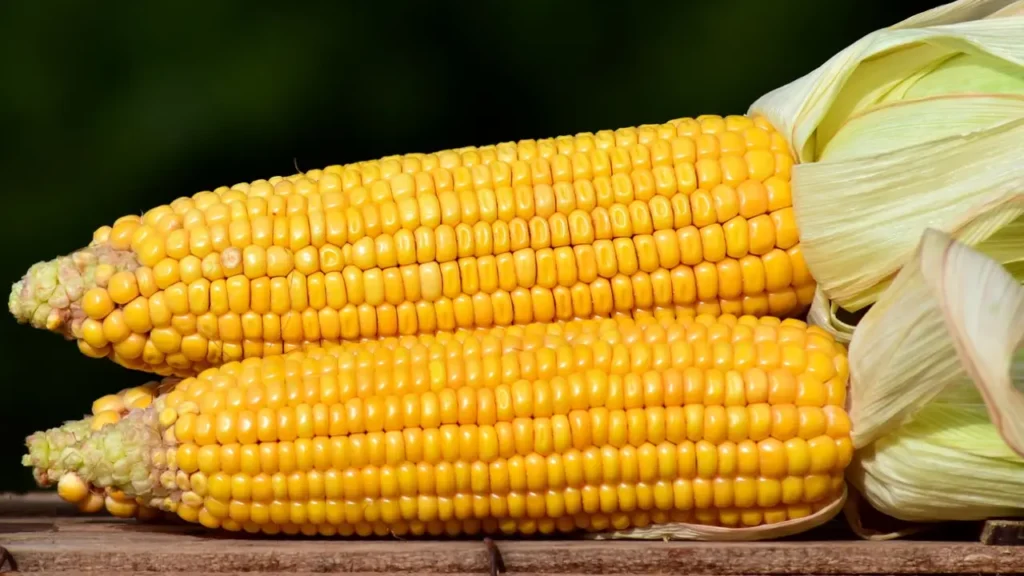
Signs of Ripe Corn
Corn is ready for harvest after about 20 days of the silks’ appearance. What to look for is the fact when the silks are brown and husk is green. The kernels will, at this stage, appear as if they are full and when squeezed to squash, releases a milky substance. This is the right time for picking corn since makes it so delicious to eat and with a good texture.
Harvesting Techniques for Sweet Corn
The best time to harvest sweet corn is as early as possible in the morning as this leaves the corn cobs fresh. For small gardens try twisting the ear to remove it from the stalk. This preserves the quality of the corn. In larger pieces of land, there is a practice of using combine harvester which is used in cutting and processing of corn within the least time possible.
Following picking ensure that the sweet corn is placed in the fridge as this hinders the conversion of sugar to starch. Refrigerate it for up to one week, the longer the taste is going to be more on the sour side. Thus, picking and storage are comprehended as the guidelines for corn growth which must be taken into account to make every bite sweet.
Storing and Preserving Corn
Storing corn rightly retains it taste and sweet aroma in it. Starch’s sugars can deteriorate very fast, within the space of few days when not well preserved. Understanding how to store corn both short term and for a long term will definitely make it last for the entire year.
Short-term Storage Options
If you want to keep corrected ears of corn fresh, it is advisable to refrigerate it. Nevertheless, they remain good for up to a week. Corn should always be stored with the husk intact until the time it is needed for preparation. This also prevents it from drying up since the sugar cocoon also has a role of sweetening it.
Corn is about 74% water. This keeps it crunchy and tasty.
Freezing Corn for Long-term Use
To freeze corn, blanching is a must. It stops enzymes from breaking down the corn’s quality. Here’s how to freeze corn right:
- Blanch small ears for 7 minutes, medium ears for 9 minutes, and large ears for 11 minutes.
- After blanching, cool the corn in ice water before cutting the kernels off the cob or freezing the whole ears.
- Package the corn in airtight bags or containers, ensuring excess air is removed to prevent freezer burn.
Frozen corn should be stored at 0°F can last up to 9 months when the above-said techniques are followed. it maintains its taste and nutrients. Even after the harvest season, frozen corn is perfect for many recipes.
Common Challenges in Corn Growing
Planting corn is easy, but it as well comes with some certain difficulties. It is important to be able to identify corn diseases and pests if one has to have healthy crops. Thus, gardeners can prevent issues that are damaging their field or take measures to have a healthy one.
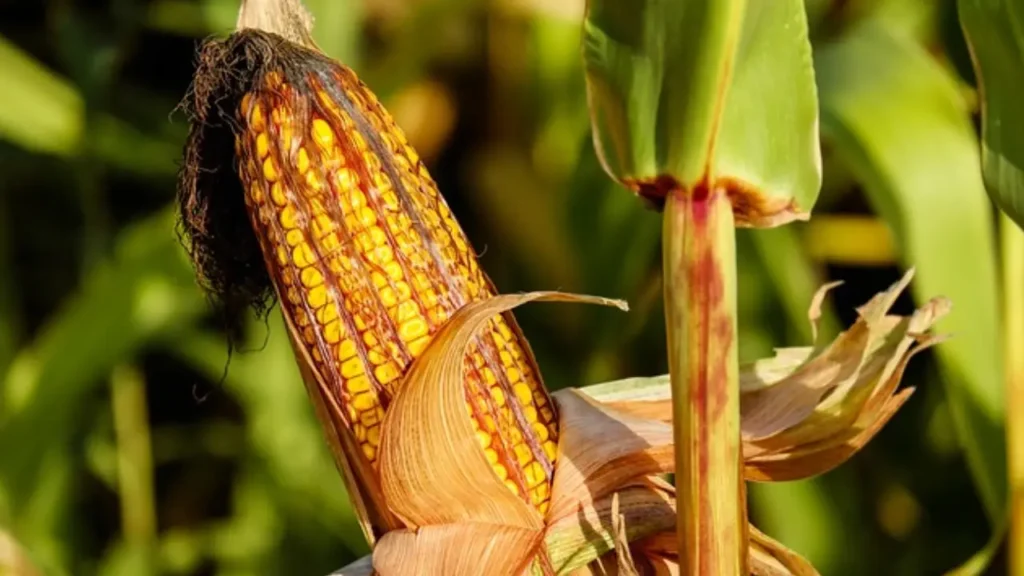
Identifying Pests and Diseases
Some pests such as the corn earworm and wire worm are known to cause losses among the crops. Both sexes feed on silks; females lay eggs on the ears or at the base of the ear, the larvae also feed on the ears. This soil borne insect pests are active from April to June and poses threat to young plants. Since these are pests that affect crops, early identification hampers the effects they will have.
A frequent examination of your fields during the early growth ensures that you are able to detect the problem early enough.
Troubleshooting Corn Growth Issues
Thus, correcting growth issues with corns involves the act of monitoring how the corn growth is coming along. Lack of moisture stunts the plant and causes the leaves to curl and poor pollination results to small or no kernels at all. Agriculture is benefited by right methods of planting since pollination is achieved.
Understanding how soils impact growth and nutrient is therefore very essential. Such knowledge assists corn growers in dealing with their difficulties.
Conclusion
It is a process to grow corn through many stages starting with seed placement to the cultivation of favorable environment for their growth. This guide illustrates just how essential each step is, coupled with the ideal care and maintenance the vitals require. Ensuring that soil is warm to touch that is between 60-85°F is useful in germination of seeds. Sowing corn at different times also increases the yield possibility, due to the fact that more plants may get the opportunity to develop.
As for corn, currently, the U. S utilises approximately 92 million acres of the land. These methods such as sub-irrigated planters can be learnt by home gardeners. These systems assist in retaining water in the soil, and improve on the amount of corn yield per area. It another important factor where selecting the right type of sweet corn like SU, SH2, and SE is also significant.
Applying the above-discussed tips assist gardeners to make complex their relations with the plants. When the season comes, and you have been maintaining the corn properly, you will be able to reap of a mature corn that is delicious.
Must Read : How to Grow Pumpkins
FAQ : How to Grow Sweet Corn
How do I know when to plant corn seeds?
Corn seeds are to be planted after the final frost once the ground temperature has risen to at least 55 °F. This helps them to germinate good.
What is the best way to prepare the soil for corn?
First of all, you need to analyze how proper your ground is – its pH and nutrient levels. Next, use compost to increase the fertility level of the soil and also ensure the soil is moist most of the time.
What are the key stages of corn growth?
From a small corn seedling to tasseling, to pollination and finally to ear formation. This part my contain some over lap but they are as follows mainly all are important for a good harvest;
What is the difference between sweet corn and field corn?
Sweet corn is grown for people to use since it is sweet in taste. Field corn is utilized for feed for cattle and other livestock and in other products.
How should I space my corn plants?
Corn plants should be planted 30 to 36 inches apart in the rows. This aids in pollination and this is very important if one wants to get full ears of corn in the field.
What are some effective watering techniques for corn?
Soaker hoses should be utilized in watering corn plants to reach deep down. Maintain sufficient water in the soil especially when the conditions are dry.
How can I protect my corn from pests?
The main pests affecting bananas are weevils, thrips, and black ants, eliminating these pests through the following methods; Crop rotation and using natural repellants. This should be done frequently in order to control such pests as corn earworm.
When is the best time to harvest sweet corn?
Ripe the sweet corns when the silks of the corn are fully developed and the kernels on the cob look attractive. Enjoy it best when picked early in the morning.
How should I store my harvested corn?
To maintain fresher ears, store them in the fridge and can last for up to one week. In case you wish to store the corn for long, blanch it then freeze it.
What are common challenges faced when growing corn?
Some challenges that occur are; pests, corn earworms and diseases such as Stewart’s wilt. Identifying these issues instantly enables you to take measures that prevent a disaster to your produce.

